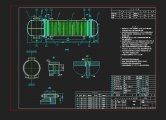固定管板式换热器的设计(含CAD图)(审题表,任务书,开题报告,中期自查表,论文说明书6000字,CAD图纸5张)
摘要
我的课题是固定管板式换热器的设计。近年来对换热器的市场需求越来越多,固定管板式换热器作为一种简单高效的换热器,大量使用在许多工业中。该种设备利用两种具有一定温差的液体介质实现热交换,我设计的换热器要求是以水和水蒸气为介质的,壳程和管程的工作压力分别为0.5和0.6MPa。由此可以确定物料的物性参数,然后工艺计算,最后在依据计算数据对换热器进行选型和校验,我的设计思路大体是这样的。根据实际要求选择自己需要的结构类型,可以按照自己想的去设计,所以希望能够在国家标准的条件下,设计出一个更先进,更优质的换热器。另外本次设计还需要满足以下3个要求:工艺操作的要求,安全要求和性价比的要求。
对于同一种形式的换热器,由于作业情况不同,往往采用不同的结构。所以在设计时,须按其特定的条件进行分析设计,来满足工艺的需要。
关键词:换热器 固定管板 工艺
The design of fixed tube plate heat exchanger
Abstract
My topic is fixed tube plate heat exchanger design. More and more in recent years, the market demand for the heat exchanger, fixed tube plate heat exchanger as a simple and efficient heat exchanger, a lot of use in many industries. Such equipment using two kinds of liquid medium of a certain temperature for heat exchange, I design of heat exchanger is water and water vapor as medium, pressure of shell side and tube side were 0.5 and 0.6 MPa. The material physical parameters can be determined, and then process calculation, finally in the selection of heat exchanger according to the calculated data and validation, I design train of thought in general is like this. According to actual requirements need to choose their structure types, can according to what they want to design, so want to be able to under the condition of national standard, design a more advanced, more excellent heat exchanger. This design also need to meet the requirements of the following three: the requirement of process operation, safe and cost-effective requirements.
For the same kind of heat exchanger, because the job is different, often with different structure. So, when the design must according to its specific conditions for analysis and design, to meet the needs of the process.
Keywords: heat exchanger;fixed tube sheet heat; technology
工艺计算是在有资料数据的情况下,经过计算分析,在根据实际情况,对产品进行一种比较理想化的设计。
2.1初始数据的确定
2.1.1设计参数
壳程水蒸汽入口温度 11=170℃
壳程水蒸汽出口温度T12=95℃
壳程水蒸汽工作压力为:
P1=0.5MPa
管程水进口温度T21=20℃
管程水出口温度T22=80℃
管程水工作压力P2=0.6MPa
管程水的流量G2=310000kg/h
焊缝系数为ψ=0.85
腐蚀裕量为C=1
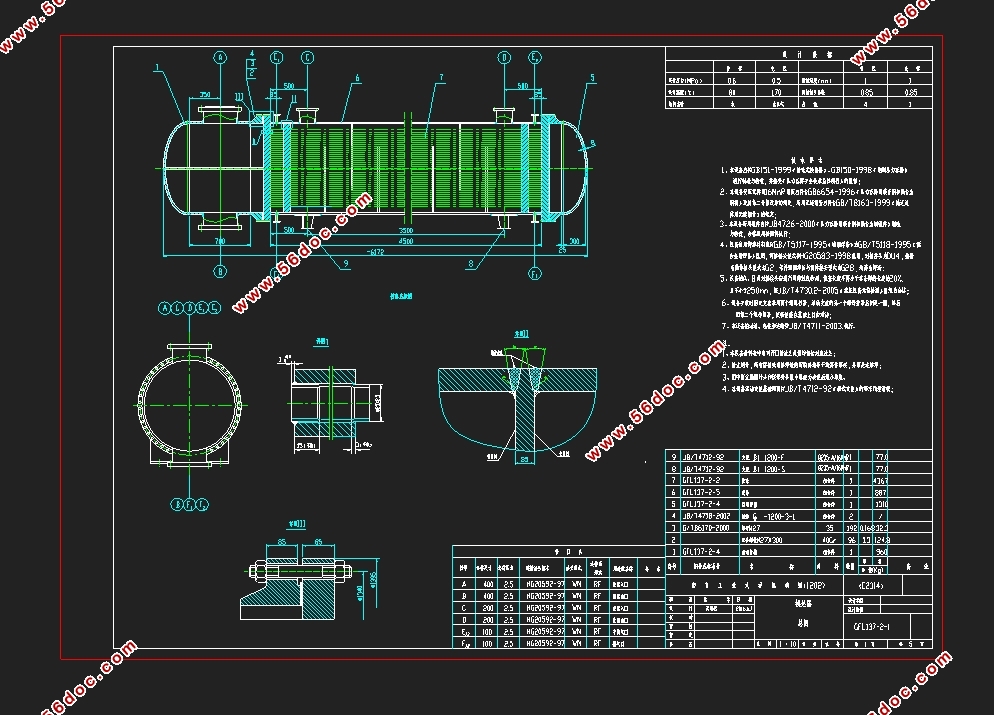
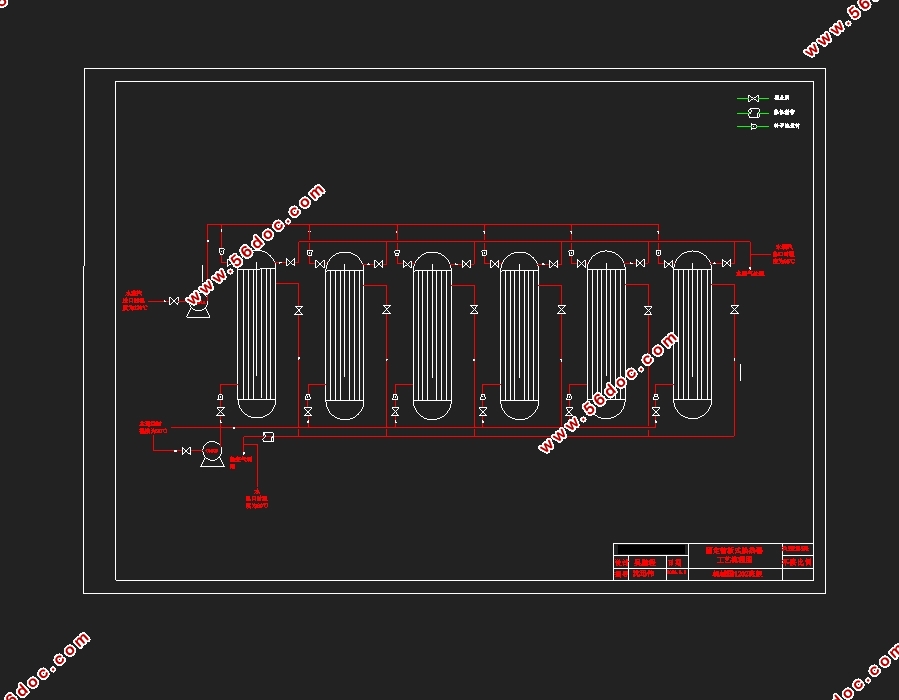
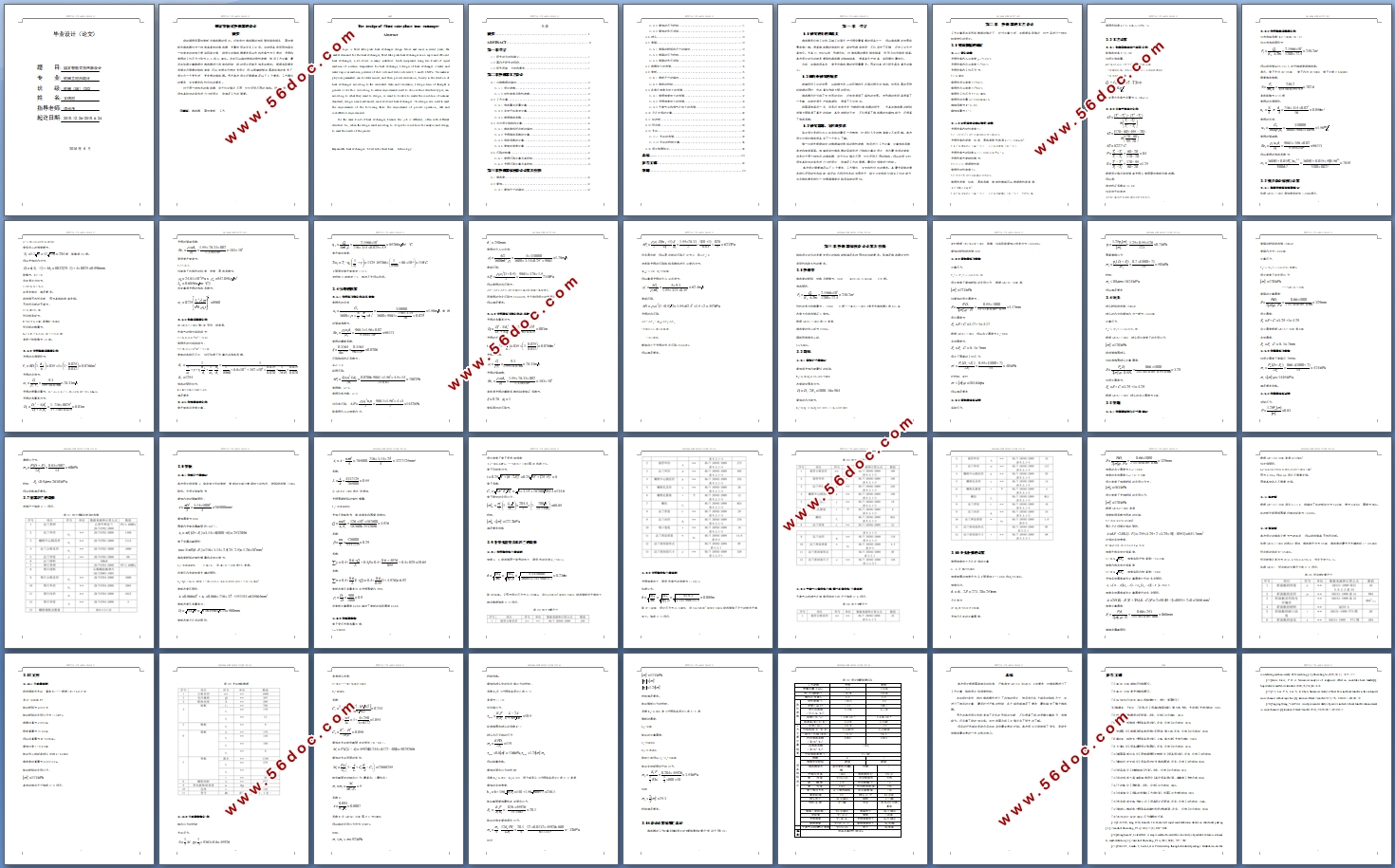
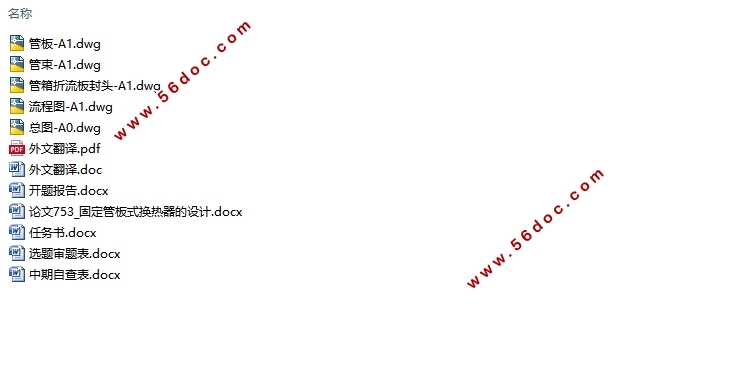
目录
摘要..............................................................Ⅰ
ABSTRACT......................................................Ⅱ
第一章引言
1.1研究的目的和意义..............................................1
1.2国内外研究的现状..............................................1
1.3研究思路,方法和要求..........................................1
第二章换热器工艺设计
2.1初始数据的确定................................................2
2.1.1设计参数.................................................2
2.1.2定性温度及物性参数.......................................2
2.2工艺计算......................................................3
2.2.1传热量与流量计算.........................................3
2.2.2有效平均温差计算.........................................3
2.2.3管程换热系数.............................................4
2.3初步设计结构和计算............................................4
2.3.1换热管和折流板的确定.....................................4
2.3.2壳程换热系数的计算.......................................5
2.3.3传热系数的计算...........................................6
2.3.4管壁的温度计算 ..........................................7
2.4压降的核算 ...................................................7
2.4.1管程压降计算及其校核.....................................8
2.4.2壳程压降计算及其校核.....................................9
第三章换热器结构设计计算及校核
3.1换热管.......................................................10
3.2筒体.........................................................10
3.2.1筒体尺寸的确定..........................................10
3.2.2筒体的压力校核..........................................11
3.2.3筒体的水压试验..........................................11
3.4封头.........................................................12
3.5管箱.........................................................12
3.5.1管箱的材料和尺寸的确定..................................12
3.5.2管箱的压力校核..........................................13
3.5.3管箱的水压试验..........................................13
3.7容器法兰的选择...............................................14
3.8管板.........................................................15
3.8.1管板尺寸的确定..........................................15
3.8.2管板的校核..............................................16
3.9各管孔接管及法兰的选择.......................................17
3.9.1管程接管法兰的选择......................................17
3.9.2壳程接管法兰的选择......................................18
3.9.3平衡气口和排气孔法兰的选择..............................19
3.10开孔补强的计算..............................................20
3.11防冲板......................................................22
3.12折流板......................................................22
3.13支座........................................................23
3.11.1支座的选择.............................................23
3.11.2支座的校核计算.........................................24
3.14设计结果统计................................................28
总结.............................................................29
参考文献.........................................................30
致谢..............................................................32
|
